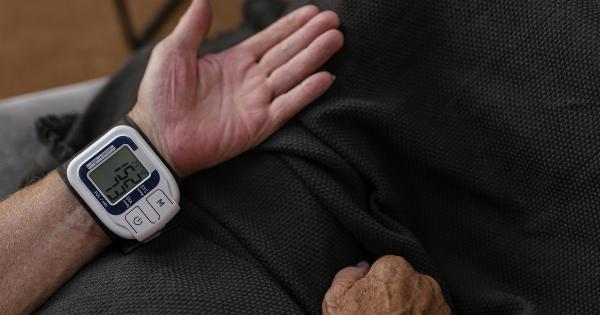Knowing about tenths can be a crucial factor in determining when to see a doctor. Tenths are fractions of a degree, and in medicine, they are used to measure temperature with precision. The normal human body temperature is usually around 98.6°F (37°C).
However, it is essential to know that the temperature can vary slightly from person to person. Moreover, even a small change in body temperature can signify a significant health condition.
Therefore, knowing when to take note of an increase or decrease in body temperature can help you or a loved one identify whether a visit to the doctor is in order.
The Basics of Body Temperature
The normal range of body temperature in humans is between 97°F (36.1°C) and 99°F (37.2°C). However, the temperature can fluctuate throughout the day, depending on various factors. Some of the factors that can affect body temperature include:.
- Exercise
- Hormonal changes
- Room temperature
- Amount of clothing
- Time of day
If body temperature reaches 100°F (37.8°C), it is considered a fever. Fevers can be an indicator of many different conditions, from a common cold to a severe infection. In some cases, it may also be a sign of a more serious condition, such as COVID-19.
What Are Tenths?
Tenths are fractions of a degree. For example, if a person’s body temperature is 98.2°F, it means they have a temperature that is two-tenths of a degree higher than the standard 98.0°F.
In medicine, tenths are used to measure temperature with precision, especially in critical conditions. A slight increase or decrease in temperature can be indicative of an underlying condition. Therefore, it is essential to monitor temperature carefully, especially in children or older adults who may be more susceptible to infections.
When to See a Doctor
In most cases, a slight increase or decrease in body temperature is not a cause for concern. However, if the temperature continues to rise or the person experiences other symptoms in conjunction with the fever, it may be time to see a doctor.
Some of the signs to look out for include:.
- High fever over 103°F (39.4°C)
- Rapid heartbeat
- Difficulty breathing
- Nausea or vomiting
- Severe headache
- Stiff neck
- Confusion or disorientation
- Seizures
If you or a loved one develops a fever and experiences any of the above symptoms, it is essential to seek medical attention immediately.
In some cases, a fever can be a sign of a more severe condition, such as meningitis or sepsis, which require urgent medical treatment.
How to Measure Body Temperature
There are several ways to measure body temperature, including:.
- Oral Thermometer: Oral thermometers are the most common way to measure temperature. The thermometer is placed under the tongue and left there for a few minutes to get an accurate reading.
- Ear Thermometer: Ear thermometers measure temperature by infrared light that bounces off the eardrum. They are safe and easy to use.
- Forehead Thermometer: Forehead thermometers are non-invasive and easy to use. They measure temperature by scanning the forehead and temporal region.
- Rectal Thermometer: Rectal thermometers are the most accurate way to get a precise measurement of body temperature. However, they are also the most invasive and uncomfortable method.
In conclusion, understanding tenths can help you monitor changes in your body temperature with precision. If you or a loved one develops a fever, monitor the body temperature closely, and look for other signs of illness.
If the symptoms persist, it’s essential to seek medical attention as soon as possible.






























